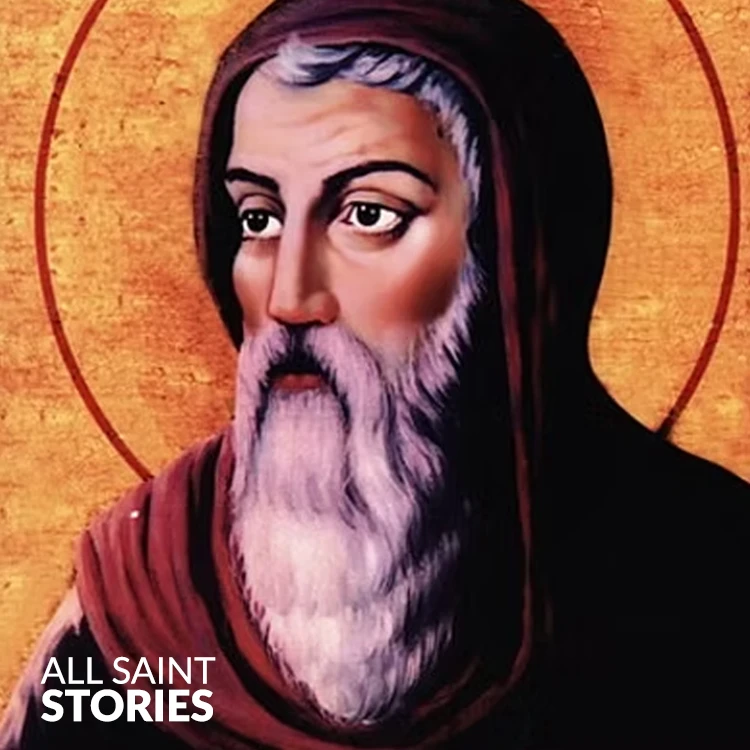"O Holy Saint Abaemun of Tarnat, Intercede for us with your unwavering faith and deep devotion. Guide us in our struggles, Strengthen our hearts with courage, And lead us closer to God's grace. Through your example, may we grow in holiness, And find peace in the midst of life's challenges. Amen."
ST. ABĀMŪN OF TARNŪT
ST. ABĀMŪN OF TARNŪT

Saint Abāmūn of Tarnūt was a 4th-century Christian martyr from Tarnūt, Egypt. Witnessing the persecution of Christians in Upper Egypt, he courageously presented himself to Arianus, the governor of Ansena, declaring his faith. Refusing to renounce Christianity, he was subjected to brutal torture, including iron nails, beatings, and being hung. Despite the suffering, he remained steadfast. He was then sent to Alexandria, where his unwavering faith inspired others, including a young woman named Theophila, who was also martyred. Eventually, Abāmūn had his limbs severed and was beheaded in 372 AD. He is venerated in the Coptic Orthodox Church, Eastern Orthodox Churches, and the Catholic Church, with his feast day observed on August 3.
Saint Abāmūn of Tarnūt was born in the 4th century in the city of Tarnūt, Egypt. Little is known about his early life, but he lived during a time when Christians faced severe persecution under Roman rule. During this period, the governor of Ansena, Arianus, was actively seeking to suppress the Christian faith, subjecting believers to extreme torture in an attempt to force them to renounce their religion. Abāmūn, rather than hiding or fleeing from persecution, boldly declared his Christian faith and willingly presented himself before the authorities, fully aware of the consequences.
Arianus, upon hearing Abāmūn’s confession of faith, ordered him to be tortured. He was subjected to various brutal methods, including being struck repeatedly, having nails driven into his body, and being scraped with iron combs. Despite enduring unbearable pain, Abāmūn refused to abandon his belief in Christ. His strength and unwavering faith frustrated the governor, who ultimately decided to send him to Alexandria for further punishment.
In Alexandria, Abāmūn's courage inspired many other Christians to remain steadfast in their beliefs. Among them was a young woman named Theophila, who openly condemned the governor and his officials for their idolatry. As punishment, she was thrown into a fire, but miraculously, the flames did not harm her. Seeing that she had survived, her persecutors executed her by another method, ensuring that she was put to death.
Abāmūn himself faced even more severe torture in Alexandria. In an act of extreme cruelty, his captors cut off his limbs before finally beheading him in 372 AD. His martyrdom served as a powerful testament to his faith, demonstrating his willingness to endure suffering and death rather than renounce Christ. His sacrifice left a lasting impact on the Christian community, strengthening their resolve in the face of persecution.
Saint Abāmūn is venerated in the Coptic Orthodox Church, the Eastern Orthodox Churches, and the Catholic Church. His feast day is celebrated on August 3 (corresponding to 27 Epip in the Coptic calendar). Though few details remain about his burial, his memory lives on as an inspiration to believers. His story is a reminder of the trials early Christians faced and the extraordinary faith they exhibited in the face of suffering and death.
Video Not Found
No images uploaded for this saint yet.
The information you see here may be either accurate or might contain some discrepancies, as it is gathered from various sources. If you believe that any part of the details about this saint is incorrect or incomplete, we kindly invite you to share your suggestions or corrections with us. Your insights are invaluable in helping us ensure that we provide the most accurate and reliable information.
We encourage you to use the form on the left to submit any corrections or additional information you may have. Whether it's a small detail or a larger correction, we will carefully review your submission and update the information accordingly. Your contributions will not only help us maintain the integrity of the content but also benefit others who seek to learn more about this saint. We greatly appreciate your assistance in making our information more accurate and complete.
Please rest assured that your personal details will remain confidential, and your suggestions will be handled with the utmost care. Together, we can ensure that the information about this saint is as accurate and informative as possible. Thank you for your time and contribution!
If you have any suggestion about ST. ABĀMŪN OF TARNŪT
Your suggestion will help improve the information about this saint. Your details will not be disclosed anywhere.
© 2025 Copyright @ www.allsaintstories.com

 English
English
 Italian
Italian
 French
French
 Spanish
Spanish
 Malayalam
Malayalam
 Russian
Russian
 Korean
Korean
 Sinhala
Sinhala
 Japanese
Japanese
 Arabic
Arabic
 Portuguese
Portuguese
 Bantu
Bantu
 Greek
Greek
 German
German
 Dutch
Dutch